New Spain
AD 1535 - 1821
The viceroyalty of New Spain was created when the greatest Aztec city, Tenochtitlan, was defeated in 1521, ending Aztec, or Mexica, civilisation. The first phase of Spain's conquest of the South American continent was complete and a form of governance for the massive new territories was required on behalf of the crown. The conquest was managed within a very short space of time, just four years or so from when the first expedition was sent into Mexica, but when it was complete, the former heartland of Spanish rule in the Americas,Hispaniola, lost much of its importance.
The process of establishing the viceroyalty took until 1535. To avoid the risk of an adventurous conquistador forming his own breakaway kingdom in the conquered territories (namely, Cortes), Charles I of Spain created the Council of the Indies in 1524, and in 1527 the administration of New Spain was taken out of the hands of Hernan Cortes. The new form of administration by Audiencia, essentially a royal committee, proved unwieldy, and in 1535 the first viceroy of New Spain was appointed. At its height, New Spain governed Spanish conquests in North and Central America, the Caribbean, and a few territories in the Asia-Pacific region.
| ||||||
1517 - 1518
|
Two expeditions are sent from Hispaniola by Diego Velazquez into the Aztec empire.
| |||||
1519
|
The Spanish conquistador Hernan, or Hernando, Cortes is elected captain of the third expedition to the mainland from the colony of Cuba, just west of Hispaniola, an expedition which he partially funds. He and his force of 600 land in the Yucatan Peninsula in Mayan territory. They soon arrive at Tenochtitlan.
| |||||
1520
|
The Aztec city of Azcapotzalco is conquered, and later becomes a Mexican administrative borough.
| |||||
1521 - 1524
|
The greatest Aztec city, Tenochtitlan, is defeated and subsumed within the empire, ending Aztec, or Mexica, civilisation. With that, the first phase of the Spanish conquest of the South American continent is completed and New Spain is effectively born. Cortes becomes the first colonial ruler of the conquered territories until 1524, running his administration from Mexico City. Then the city is named as the capital of the Municipality of New Spain and control of the new territories passes through many hands before the king of Spain organises an official viceroyalty.
| |||||
1527
|
The Audiencia, a royal committee, is created to govern the newly conquered territories, 'relieving' Cortes of his new domain.
| |||||
1532
| ||||||
1534 - 1535
|
In 1534, the new governate of Rio de la Plata is created to administer territories which are still overseen by Peru. The following year, with the Audiencia proving to be unwieldy, the king of Spain appoints the first viceroy to take command of New Spain.
| |||||
1535 - 1550
|
Antonio de Mendoza
| |||||
1540 - 1543
|
Antonio de Mendoza vigorously encourages the exploration of all of Spain's new territories in the Americas. New areas are discovered, settled and conquered under the control of the viceroy, including the south-west, the western coast of Alta California, and the Philippine Islands. In 1542, a new viceroyalty is created in order to govern the vastSpanish conquests in Peru. During the course of the century, many new towns are established in North and Central America. The province of Guatemala is established out of Chiapas, El Salvador, Guatemala, Honduras, andNicaragua. While formally subject to New Spain, the region is administered separately as a matter of practicality. To its south, the New Kingdom of Granada is created to encompass the territories covering modern northern and central Colombia, almost all of Ecuador, Costa Rica and Panama, northern Venezuela, and north-western Guyana.
| |||||
1550 - 1564
|
Luis de Velasco
|
Died in office.
| ||||
1550 & 1560
| ||||||
1564 - 1566
|
Francisco Ceinos
|
Dean of the Audiencia governing on an interim basis.
| ||||
1566 - 1568
|
Gaston de Peralta
| |||||
1567 - 1568
|
Alonso Munoz and Luis Carrillo
|
Royal Commissioners ruling temporarily.
| ||||
1567 - 1568
|
Luis Carrillo
| |||||
1568
|
Francisco Ceinos
|
Dean of the Audiencia governing on an interim basis.
| ||||
1568 - 1580
|
Martin Enriquez de Almanza
| |||||
1580 - 1583
|
Lorenzo Suarez de Mendoza
|
Second cousin of Don Antonio.
| ||||
1583 - 1584
|
Luis de Villanueva y Zapata
|
Dean of the Audiencia governing on an interim basis.
| ||||
1584 - 1585
|
Pedro Moya de Contreras
|
Also archbishop of Mexico.
| ||||
1585 - 1590
|
Alvaro Manrique de Zuniga
| |||||
1590 - 1595
|
Luis de Velasco
| |||||
1595 - 1603
|
Gaspar de Zuniga y Acevedo
| |||||
1603 - 1607
|
Juan de Mendoza y Luna
| |||||
1607 - 1611
|
Luis de Velasco
|
Second term after acting as viceroy of Peru.
| ||||
1609
|
The governorship of Guatemala is raised to the position of captaincy general, in the hope that the region's greater level of autonomy will be able to halt increased pirate attacks.
| |||||
1611 - 1612
|
Garcia Guerra
|
Also archbishop of Mexico. Died.
| ||||
1612
|
Pedro Otarola
|
Dean of the Audiencia governing on an interim basis.
| ||||
1612 - 1621
|
Diego Fernandez de Cordoba
| |||||
1617
|
The region of Yucatan is promoted as a captaincy general in its own right.
| |||||
1621
|
Paz de Valecillo
|
Dean of the Audiencia governing on an interim basis.
| ||||
1621 - 1624
|
Diego Carrillo de Mendoza y Pimentel
| |||||
1624 - 1635
|
Rodrigo Pacheco y Osorio
| |||||
1635 - 1640
|
Lope Diez de Armendariz
| |||||
1635
|
Don Lope is the first 'Criollo', or European born in the colonies, to become viceroy of New Spain. In this case, Don Lope had been born in Peru in 1575.
| |||||
1640 - 1642
|
Diego Lopez Pacheco Cabrera y Bobadilla
| |||||
1642
|
Juan de Palafox y Mendoza
|
Also archbishop of Puebla & Mexico.
| ||||
1642 - 1648
|
Garcia Sarmiento de Sotomayor
| |||||
1648 - 1649
|
Marcos de Torres y Rueda
|
Also bishop of Yucatan.
| ||||
1649 - 1650
|
Matias de Peralta
|
Also dean of the Audiencia.
| ||||
1650 - 1653
|
Luis Enriquez de Guzman
| |||||
1653 - 1660
|
Francisco Fernandez de la Cueva
| |||||
1655
|
English troops take Jamaica from New Spain, adding it to their New World Colonies and making it a hub for rum production and slave trading. It also allows renewed contact with the Mosquito Coast.
| |||||
1660 - 1664
|
Juan de Leyva de la Cerda
| |||||
1664
|
Diego Osorio de Escobar y Llamas
|
Also archbishop of Puebla.
| ||||
1664 - 1673
|
Antonio Sebastian de Toledo
| |||||
1673
|
Pedro Nuno Colon de Portugal
| |||||
1673
|
Don Pedro is a direct descendant of Christopher Columbus, discoverer of the Spanish Americas and first viceroy of the Indies at Hispaniola. Unfortunately he dies just five days after taking up his post.
| |||||
1673 - 1680
|
Payo Enriquez de Rivera
|
Also archbishop of Mexico.
| ||||
1680 - 1686
|
Tomas Antonio de la Cerda y Aragon
| |||||
1686 - 1688
|
Melchor Portocarrero y Lasso de la Vega
| |||||
1688 - 1696
|
Gaspar de la Cerda Sandoval Silva
| |||||
1691
|
Due to the threat of French encroachment from the New French colony of Louisiana, New Spain establishes its first presence in Texas, although these early missions quickly fail.
| |||||
1696
|
Juan Ortega y Montanes
|
Interim viceroy of New Spain, & later archbishop of Mexico.
| ||||
1696 - 1701
|
Jose Sarmiento y Valladares
| |||||
1701 - 1702
|
Juan Ortega y Montanes
|
Interim viceroy of New Spain, & archbishop of Mexico.
| ||||
1702 - 1711
|
Francisco Fernandez de la Cueva Enriquez
|
First Spanish viceroy of New Spain appointed by Bourbon kings.
| ||||
1711 - 1716
|
Fernando de Alencastre Norona y Silva
| |||||
1715
| ||||||
1716
|
New missions are established in Texas to create a buffer zone between it and the New French colony of Louisiana. These are followed in 1718 by the first European settlement in Texas, at San Antonio.
| |||||
1716 - 1722
|
Baltasar de Zuniga y Guzman
|
Viceroy of Sardinia (1704-1706).
| ||||
1722 - 1734
|
Juan de Acuna
| |||||
1734 - 1740
|
Juan Antonio de Vizarron y Eguiarreta
|
Also archbishop of Mexico.
| ||||
1740 - 1741
|
Pedro de Castro y Figueroa
| |||||
1741 - 1742
|
Pedro Malo de Villavicencio
|
Interim viceroy of New Spain, & president of the Audiencia.
| ||||
1742 - 1746
|
Pedro Cebrian y Agustin
| |||||
1746 - 1755
|
Juan Francisco de Guemes y Horcasitas
| |||||
1755 - 1760
|
Agustin de Ahumada y Villalon
| |||||
1760
|
Francisco Antonio de Echavarri
|
Also dean of the Audiencia.
| ||||
1760
|
Francisco Cajigal de la Vega
|
Previously captain general of Cuba (1747-1760).
| ||||
1760 - 1766
|
Joaquin de Montserrat
| |||||
1763
|
The French cede the vast and wild Louisiana Territory (stretching from modern Louisiana to Canada) from New France to Spain, only to take it back again in 1800 under the Treaty of San Iidefonso.
| |||||
1766 - 1771
|
Carlos Francisco de Croix
| |||||
1771 - 1779
|
Antonio Maria de Bucareli y Ursua
| |||||
1779
|
Francisco Roma y Rosell
|
Also regent of the Audiencia.
| ||||
1779 - 1783
|
Martin de Mayorga
|
Previously captain general of Guatemala (1773-1779).
| ||||
1783 - 1784
|
Matias de Galvez
|
Previously captain general of Guatemala (1779-1783).
| ||||
1784 - 1785
|
Vicente de Herrera y Rivero
|
Also regent of the Audiencia.
| ||||
1785 - 1786
|
Bernardo de Galvez y Madrid
| |||||
1786 - 1787
|
Eusebio Sanchez Pareja y Beleno
|
Also regent of the Audiencia.
| ||||
1787
|
Alonso Nunez de Haro y Peralta
|
Also archbishop of Mexico.
| ||||
1787 - 1789
|
Manuel Antonio Flores
| |||||
1789 - 1794
|
Juan Vicente de Guemes Padilla Horcasitas
| |||||
1794 - 1798
|
Miguel de la Grua Talamanca
| |||||
1798 - 1800
|
Miguel Jose de Azanza
| |||||
1800 - 1803
|
Felix Berenguer de Marquina
| |||||
1803 - 1808
|
Jose de Iturrigaray
|
Deposed, sent to Spain, and freed. Died 1815.
| ||||
1806
|
The USA asks the viceroy to remove his Spanish troops from New Orleans in Louisiana so that it can take possession of the area up to the River Sabine. The viceroy agrees and the troops are removed. By this stage New Spain already encompasses Mexico, plus Arizona, California, parts of Florida, Nevada, New Mexico, Texas, Utah, and areas of Colorado, Oregon, and Wyoming.
| |||||
1808
|
The lack of a king in French-occupied Spain creates instability in New Spain, and at the end of a turbulent year, the viceroy is deposed. Pedro de Garibay is appointed by the Audiencia and recognises the authority of the Junta of Seville in Spain, following its directives while Joseph Bonaparte is puppet king of Spain during the Napoleonic Wars. The coup against the viceroy is seen by the pro-independence party in New Spain as a final break with the old country, and agitation and political manoeuvring begins to edge the colony towards independence.
| |||||
1808 - 1809
|
Pedro de Garibay
|
Controlled by the Audiencia. Died 1815.
| ||||
1809
| ||||||
1809 - 1810
|
Francisco Javier de Lizana y Beaumont
|
Archbishop of Mexico.
| ||||
1810
|
Pedro Catani
| |||||
1810 - 1813
|
Francisco Javier Venegas
| |||||
1810 - 1811
|
Two days after Don Francisco takes office, the insurrection against Spanish control of New Spain ignites with the cry, "Long live Independence! Long live America! Death to bad government!" The first phase of the war ends in defeat for the rebels and the execution of most of their leaders. However, new rebel leaders soon spring up and the countryside is full of armed groups.
| |||||
1813 - 1816
|
Felix Maria Calleja del Rey
| |||||
1815 - 1817
|
Following four years of occasionally heavy fighting, a new rebel leader appears in the south. Don Felix, his rule becoming ever more dictatorial, is relieved of his position. His replacement apparently ends the insurrection.
| |||||
1816 - 1821
|
Juan Ruiz de Apodaca
|
Previously captain general of Cuba. Deposed by a royalist coup.
| ||||
1818 - 1819
|
With the USA keen to support the rebels, William Robinson occupies Altamira and Tampico but is taken prisoner by royalists and is sent to Cadiz. He escapes at Gibraltar with British help but as a consequence Spain and the United States sign the Adams-Onis Treaty on 22 February 1819. This establishes the border between the two countries, with the US gaining Florida and renouncing its claim to Texas, and Spain renouncing its claim to Oregon.
| |||||
1821
|
Francisco Novella Azabal Perez y Sicardo
|
Army general created interim viceroy.
| ||||
1821
|
Juan O'Donoju
|
Captain general of New Spain. Died ten days after independence.
| ||||
1821
|
New Spain as a whole achieves independence from Spain, bringing 300 years of governance of the colonies to an end. The name of the capital city, Mexico, is applied to the whole country. Juan O'Donoju uses diplomacy to withdraw Spanish troops with the minimum of bloodshed. Spain is left only with its Caribbean territories (includingCuba and Puerto Rico). Hispaniola is entirely lost in 1822 and Peru in 1824.
On 3 October 1821, the captaincy general of Guatemala (which is formed of Chiapas, Costa Rica, El Salvador, Guatemala, Honduras, and Nicaragua) is annexed to the Mexican empire.
| |||||
Mexican Empire
AD 1822 - 1823
Mexico was born out of New Spain when the first rebellion began in 1810. Independence came in 1821 when all of Central America was freed from Spanish control. The last viceroy of New Spain in Mexico signed the Act of Independence on 28 September 1821. On 3 October 1821, the captaincy general of Guatemala (Chiapas, Costa Rica, El Salvador, Guatemala, Honduras, and Nicaragua) was also joined to the Mexican empire. Mexico therefore originally encompassed not only modern Mexico, but also Arizona, California, Nevada, New Mexico, Texas, Utah, plus areas of Colorado and Wyoming and all of Central America except modern Panama (part of Gran Colombia) and Belize.
| ||||||
1822 - 1823
|
Agustin / Augustin
|
First constitutional emperor of Mexico. Abdicated. Executed.
| ||||
1823
|
Agustin has as his consort Charlotte (or Carlotta), daughter of Leopold I of the Belgians. Trying to run the country as he had previously run his military forces as a Spanish officer, he is forced to abdicate the throne in the face of increasing opposition. A republic is declared. Despite being threatened with death should he ever return to Mexico, he does so in 1824 in an attempt to calm growing instability in the country. He is immediately arrested and is soon executed. All the countries of the former captaincy general of Guatemala leave Mexican control, forming the federal republic of Central America.
| |||||
1824 - 1864
|
Prince Agustin Jeronimo
|
Heir and titular emperor upon his father's death.
| ||||
1864
|
With the end of the Mexican republic of 1824 in sight, Prince Agustin approves the adoption of his nephews, Agustin and Salvador, by Archduke Ferdinand Maximilian of Austria. Maximilian himself is the new ruler of the country under the banner of the Mexican Second Empire.
| |||||
Mexican Republic
AD 1824 - 1864
Mexico's empire lasted all of a year or so, before opposition to the rule of the emperor forced his abdication and a republic was declared. A republican constitution was drawn up with an elected president as the head of state. Opposite points of view about how the government should be organised led to constant strife until 1836 when General Antonio Lopez de Santa Anna approved a radical amendment.
| ||||||
1836
|
General Antonio Lopez de Santa Anna suspends the 1824 constitution, and civil war erupts in Mexico in opposition to his hard-line form of centralist dictatorship. The country begins to fragment, with Texas declaring itself an independent republic. Santa Anna's troops massacre the American garrison at the Alamo to ensure that Mexico retains most of Texas, but the north-eastern core becomes independent. Santa Anna does not retain permanent control of Mexico, despite repeated attempts to do so, but over the course of his two decades in politics he is usually to be found in control of the country.
| |||||
1836 - 1855
|
Antonio Lopez de Santa Anna
|
Dictatorial military president.
| ||||
1840 - 1843
|
Mexico takes advantage of the civil war in the federal republic of Central America and grabs eastern Chiapas. However, elsewhere in Mexico, further fragmentation occurs when Rio Grande and Yucatan both declare themselves to be independent republics. Rio Grande rejoins Mexico in the same year, but Yucatan holds out until December 1843. After defeating Mexico in battle it negotiates a level of self-rule in return for rejoining the republic.
| |||||
1845 - 1848
|
The US annexes the remaining disputed territory of Texas, triggering the Mexican-American War in 1846. Yucatan again proclaims its independence but suffers an internal revolt of its Mayan people. Mexico accepts defeat in the war in 1848, permanently losing Texas as a result. Under the terms of the Treaty of Guadalupe Hidalgo, Mexico also loses Arizona, California, Colorado, Nevada, New Mexico, and Utah, and a new, permanent border is drawn along the Rio Grande. Santa Anna's days as dictatorial ruler are also numbered, with the country re-introducing a federal form of government. That same government provides help to Yucatan and it rejoins the republic.
| |||||
1861 - 1864
|
The country is invaded and occupied by France during the Franco-Mexican War (or French Intervention), with material support from Spain via Cuba, and by Britain. The invasion is successful, establishing a new empire in Mexico, but the British and Spanish quickly pull out when they realise this is France's aim.
| |||||
Second Mexican Empire
AD 1864 - 1867
Mexico, a much reduced country following the defeat of 1848, was invaded by imperial France in 1862 under the pretence of collecting loans which were overdue. Then Ferdinand Maximilian, a Habsburg archduke from Austria, was established on the throne of a second Mexican empire by conservative elements who wanted to introduce a permanent monarchy. It was almost as short-lived as its predecessor, being beset by constant conflict and with the populace viewing their emperor as a French puppet. Benito Juarez, the last republican president, managed to reclaim his country and restore the republic just three years later.
| ||||||
1864 - 1867
|
Maximilian
|
Archduke Ferdinand Maximilian of Austria.
| ||||
Agustín de Iturbide y Green
|
Grandson of Agustin. Named as Maximilian's heir.
| |||||
1867
|
Maximilian is executed by firing squad on the orders of Benito Juarez in an attempt to dissuade any further foreign efforts to colonise Mexico. Shortly before being captured, Maximilian sends his two adopted heirs to safety where they form a Mexican royal family in exile. The hereditary emperors continue to claim Maximilian's lost title in modernMexico.
| |||||
Modern Mexico
AD 1867 - Present Day
Officially titled the United Mexican States, the modern federal republic borders the USA to the north and Guatemala and Belize to the south. It comprises thirty-one states and one federal district - the populous capital city itself. Following the Second Empire period, the beginnings of modern Mexico saw the country enjoy a stable economy alongside the less enjoyable spectre of inequality and repression.
When the Second Empire's ruler, Maximilian, adopted the grandsons of the First Empire's ruler, he established a royal house that would be able to claim the title long after his death and Mexico's permanent return to a republic. The head of the imperial house fled first toBritain and then to the USA, but the House of Iturbide still holds a claim to its former royal seat. Successive claimants to the throne are shown with a shaded background.
Modern Mexico has the second-largest economy in Latin America and is a major oil producer and exporter. Though production has fallen in the last few years, about one-third of government revenue still comes from the industry. Much of the crude is bought by theUSA. However, prosperity remains a dream for many Mexicans, and the socio-economic gap remains wide. Rural areas are often neglected and huge shanty towns ring the cities. In recent decades many poor Mexicans have sought to cross the three thousand kilometre border with the US in search of work. At one point more than a million were being arrested every year trying to make the crossing, but since 2007 there appears to have been a dramatic fall in numbers, mainly attributed to changing demographics in Mexico itself.
(Additional information from External Link: BBC Country Profiles.)
| ||||||
1867 - 1925
|
Prince Agustín
|
Grandson of Agustin. Died a professor of languages in USA.
| ||||
1876 - 1911
|
This period sees Mexico recover from its period of occupation and greatly prosper under stable government.
| |||||
1898
|
Spain loses the Spanish-American War. With that it also loses much of the Spanish Caribbean, including Cuba,Puerto Rico, and the Spanish East Indies (including the Marianna Islands, and the Philippines to the USA).
| |||||
1910 - 1911
|
The growing inequality and political repression in the country triggers the Mexican Revolution. New elections see a return to peace for just two years.
| |||||
1913 - 1917
|
The new president (elected in 1911) is assassinated in a coup which is led by a conservative general named Victoriana Huerta. This re-ignites the civil war, involving now-legendary characters such as Emiliano Zapata and Pancho Villa, each leading their own small armies. Another, official army led by Venustiano Carranza ends the war and introduces a reformist constitution in 1917. Mexico maintains neutrality during the First World War, fuelling suspicion that the government has been bribed by Germany. However, it ignores a German proposal which is made public on 1 March 1917 which offers Mexico the US states of Texas, Arizona, and New Mexico if the US joins the Allies in the conflict.
| |||||
1920 - 1928
|
Two more presidents are assassinated in 1920 and 1928, but the country essentially remains stable.
| |||||
1925 - 1949
|
Princess Maria
|
Niece of Agustin. Played no political role.
| ||||
1941 - 1945
| ||||||
1949
|
Royal claimant Princess Maria and her second husband die in mysterious circumstances shortly after being interned by the Romanian communist government. Her will passes the claim to the throne to her only grandson.
| |||||
1949 - Present
|
Prince Maximilian
|
Grandson of Maria. Born 2 Mar 1944. Currently living in Australia.
| ||||
1994
|
At least 150 people die during an uprising in the southern state of Chiapas, led by the Zapatista rebel movement.
| |||||
2000 - 2006
|
For the first time since 1929 an opposition party wins the presidential election. The Institutional Revolution Party gains power for six years.
| |||||
2006
|
A bitterly-fought presidential election results in a return to victory for the conservative National Action Party after weeks of legal wrangling over the results.
| |||||
Prince Ferdinand
|
Son of Maximilian and heir. Born 1992.
| |||||
Friday, August 28, 2015
I am nothing if not overbearing.............
Subscribe to:
Post Comments (Atom)
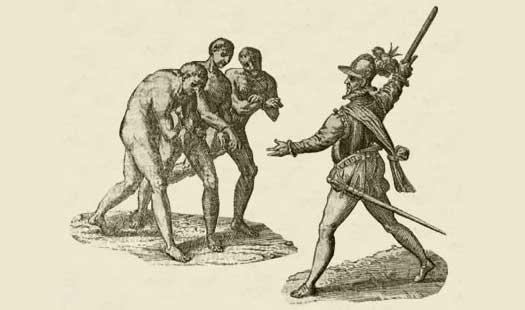

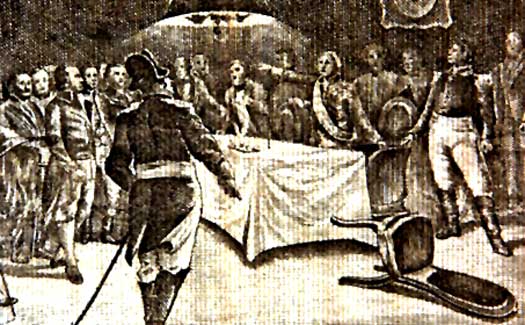
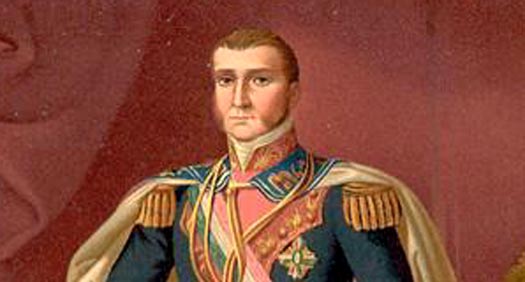
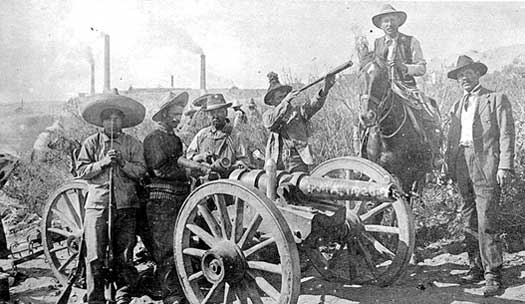
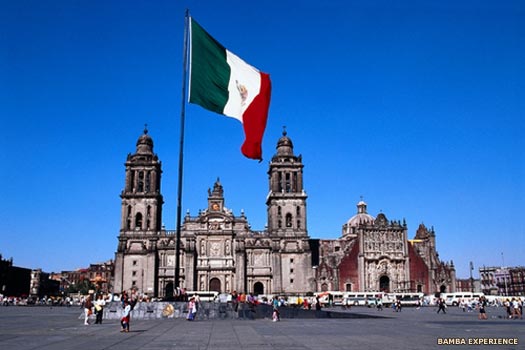
No comments:
Post a Comment